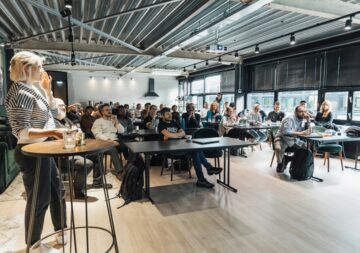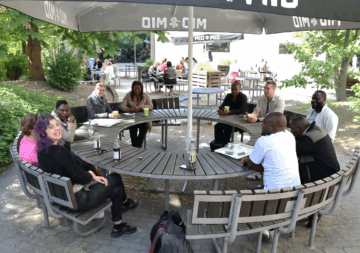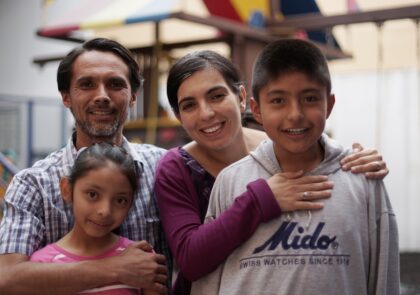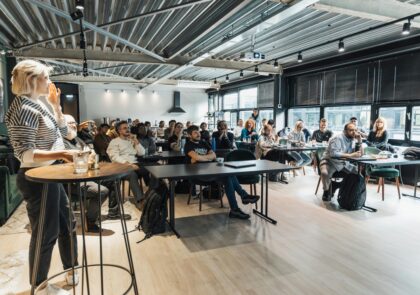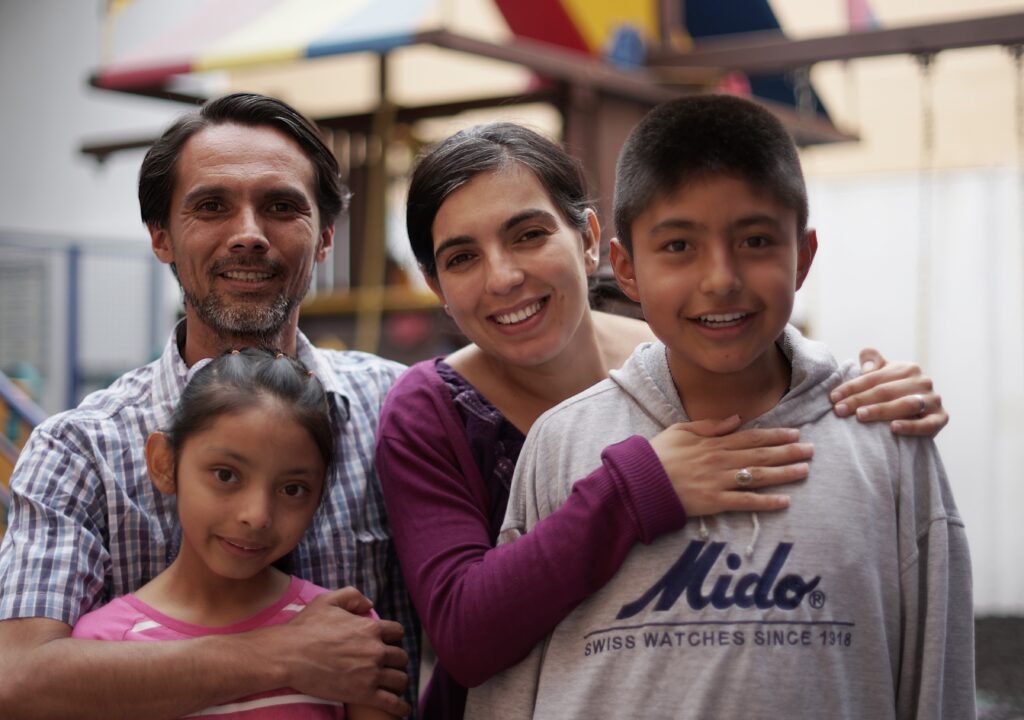
Finland is at a crossroads. With a declining birth rate, an ageing population, and increasing pressure on the welfare system, the country faces long-term demographic and economic challenges. Yet, hidden within these challenges lies an opportunity: the cultural values and economic potential of Finland’s migrant communities.
Authors: Germain Ishimwe and Jukka Sirkiä
The discussion around migration in Finland has often focused on short-term costs, such as integration programs or social support, but far less attention has been given to the long-term benefits that migrants bring when structural barriers are removed. By shifting the narrative toward opportunity, Finland can begin to see migration not as a burden but as a strategic investment in the nation’s future prosperity.
Homeownership as a Bridge to Belonging
For many migrants, owning a home is more than a financial investment. In many cultures, property symbolizes stability, family success, and intergenerational responsibility (Chiswick & Miller 2005). Buying a home is not just about shelter, it is a milestone of belonging.
Ishimwe (2025) has researched how migrants’ cultural values—particularly around homeownership, financial inclusion, and family life—can be leveraged to strengthen Finland’s economy and address demographic challenges. In Finland, many financially independent migrants remain renters, even though they could afford mortgages. The barriers are not purely financial. Rigid credit rules, lack of local credit history, language barriers, and limited mortgage information often lock newcomers out of ownership (Skifter Andersen et al. 2016). This affects not only individuals but also Finland as a whole, which misses out on potential capital investment that could strengthen housing markets and support urban renewal.
Moreover, homeownership has been shown to promote stronger neighborhood ties and greater civic participation, which in turn fosters integration and social stability. When migrants are empowered to become homeowners, they are more likely to remain in Finland long-term, invest in their communities, and contribute to local economies.
Banks as Gatekeepers of Inclusion
Financial institutions play a decisive role here. Studies from Sweden and Norway show that banks adopting flexible credit checks, multilingual services, and culturally sensitive products have successfully attracted more foreign-background customers (Andersson & Wadensjö, 2019). For Finnish banks, adopting similar strategies could expand their customer base, increase trust, and stabilize housing demand.
Practical steps could include recognizing overseas assets, offer multilingual mortgage counselling, and even developing Sharia-compliant mortgage products (Iqbal & Mirakhor 2013). By doing so, Finnish banks would not only promote financial inclusion but also unlock a new source of stability for the housing market.
Such measures would also allow Finland to keep capital within its borders. Currently, many migrants channel their savings into property investments in their countries of origin, partly because they perceive the Finnish system as inaccessible. This outflow of capital represents a lost opportunity for Finnish banks and the wider economy. By modernizing lending practices, financial institutions can transform exclusion into inclusion, while simultaneously driving growth.
Family Culture as a Demographic Lifeline
Finland’s falling birth rate is one of its greatest long-term threats. With fewer children being born each year, schools face declining enrolments, rural communities lose vitality, and the dependency ratio between workers and retirees worsens (Statistics Finland 2023).
Migrant communities, however, often bring family-centered cultural values that result in larger household sizes and higher fertility rates (Goldscheider et al. 2013; Lesthaeghe 2010). These families sustain demand for schools, housing, and local services—vital at a time when many Finnish regions face shrinking populations.
Yet, this demographic advantage will not last without supportive policies. Affordable multi-room housing scaled family benefits, and culturally sensitive childcare options are essential to sustain the family-oriented values of foreign-background communities into the second and third generations (Kulu et al. 2019).
Survey findings show that many migrants perceive children not only as part of family life but also as a source of long-term security and intergenerational continuity. If Finland can ensure that these families thrive, it will not only mitigate population decline but also strengthen the resilience of its labor market for decades to come.
Why This Matters for Finland
The message is clear: migrants are not just participants in Finland’s economy; they are potential drivers of its renewal. Supporting migrant homeownership and financial inclusion would help retain capital in Finland instead of it flowing abroad, as many migrants continue to invest in property in their countries of origin. Investing in family-oriented policies would counterbalance demographic decline. And integrating cultural values into policy design would foster both economic resilience and social cohesion.
Ignoring these opportunities could result in deeper regional disparities, weakened housing markets, and a narrower tax base. By contrast, embracing migrant contributions creates a multiplier effect: families strengthen communities, homeowners stabilize neighborhoods, and financial inclusion fuels entrepreneurship. Together, these dynamics contribute to a healthier, more innovative, and more competitive Finland.
From Demographic Challenge to Opportunity
Migrants already contribute significantly to Finland’s workforce, entrepreneurship, and cultural diversity, offering vital support amid the country’s demographic shifts. By addressing barriers in housing, developing inclusive financial services, and promoting family well-being, Finland can strengthen social cohesion and economic resilience.
Policy innovation will be crucial in turning challenges into opportunities. Collaboration between government, financial institutions, municipalities, and civil society can create inclusive ecosystems where migrants thrive. Finland’s future will depend not only on how many migrants it attracts but also on how well it integrates them into the housing market, labor market, and society at large. The country’s future prosperity will depend on how well it integrates the cultural values and economic potential of its migrant populations. By embracing diversity as a resource, Finland can build a more dynamic and forward-looking society.
References
Andersson, P., & Wadensjö, E. 2019. Immigration, housing and integration in Sweden and Norway. Stockholm University Press. Cited 24 Aug 2025. Available at https://doi.org/10.16993/bbb
Chiswick, B. R., & Miller, P. W. 2005. Do enclaves matter in immigrant adjustment? City & Community. Vol. 4(1), 5–35. Cited 24 Aug 2025. Available at https://journals.sagepub.com/doi/10.1111/j.1535-6841.2005.00101.x
Goldscheider, C., Goldscheider, F., & Bernhardt, E. 2013. What integrates the second generation? Journal of Marriage and Family. Vol. 73(1), 45–61. Cited 24 Aug 2025. Available at https://doi.org/10.1111/j.1741-3737.2010.00787.x
Ishimwe, G. 2025. Leveraging Foreigners’ Cultural Values to Boost Finland’s Economy: A Multidimensional Study of Homeownership, Financial Inclusion, and Demographic Shifts. Master’s Thesis. LAB University of Applied Sciences. Faculty of Business and Hospitality Management. Cited 08 Sept 2025. Available at https://urn.fi/URN:NBN:fi:amk-2025090824527
Iqbal, Z., & Mirakhor, A. 2013. Economic development and Islamic finance. World Bank. Directions in Development. Cited 24 Aug 2025. Available at https://hdl.handle.net/10986/15787
Kulu, H., Hannemann, T., Pailhé, A., Neels, K., Krapf, S., González-Ferrer, A., & Andersson, G. 2019. Fertility by birth order among the descendants of immigrants in selected European countries. Population and Development Review. Vol. 45(2), 489–517. Cited 24 Aug 2025. Available at https://doi.org/10.1111/padr.12226
Lesthaeghe, R. 2010. The unfolding story of the second demographic transition. Population and Development Review. Vol. 36(2), 211–251. Cited 24 Aug 2025. Available at https://doi.org/10.1111/j.1728-4457.2010.00328.x
Skifter Andersen, H., Andersson, R., Wessel, T., & Vilkama, K. 2016. The impact of housing policies and housing markets on ethnic spatial segregation: Comparing the capital cities of four Nordic welfare states. International Journal of Housing Policy. Vol. 16(1), 1–30.
Statistics Finland. 2023. Population structure and changes. Helsinki: Statistics Finland. Cited 24 Aug 2025. Available at https://www.stat.fi/til/vaerak/index_en.html
Authors
Germain Ishimwe is student in LAB University of Applied Sciences in a master’s degree program Master of Business Administration, Business Innovation Culture and Creativity. He is interested in innovation with critical thinking.
Dr. Jukka Sirkiä is a Senior Lecturer at LAB University of Applied Sciences. He has solid experience in customer-oriented business management of IT service companies and, in addition to his Senior Lecturer duties, works as a project expert in the business unit of LAB University of Applied Sciences.
Illustration: https://pxhere.com/fi/photo/1091373 (CC0)
Reference to this article
Ishimwe, G. & Sirkiä, J. 2025. How Migrants’ Cultural Values Could Strengthen Finland’s Future Economy. LAB Pro. Cited and date of citation. Available at https://www.labopen.fi/en/lab-pro/how-migrants-cultural-values-could-strengthen-finlands-future-economy/
